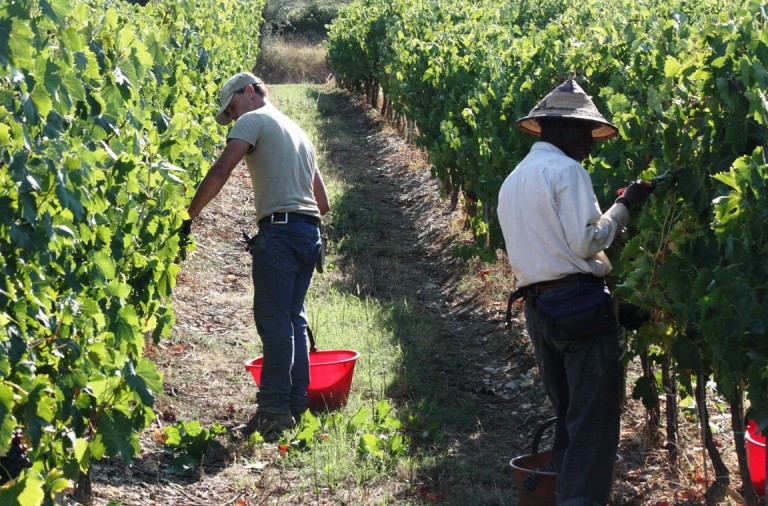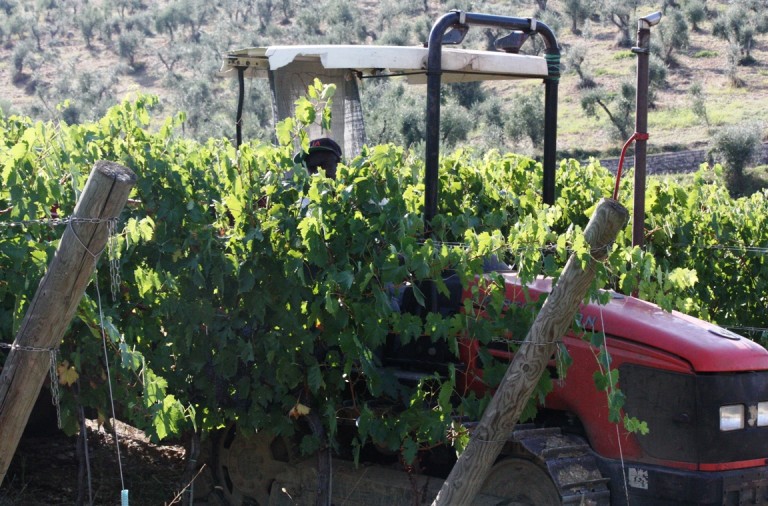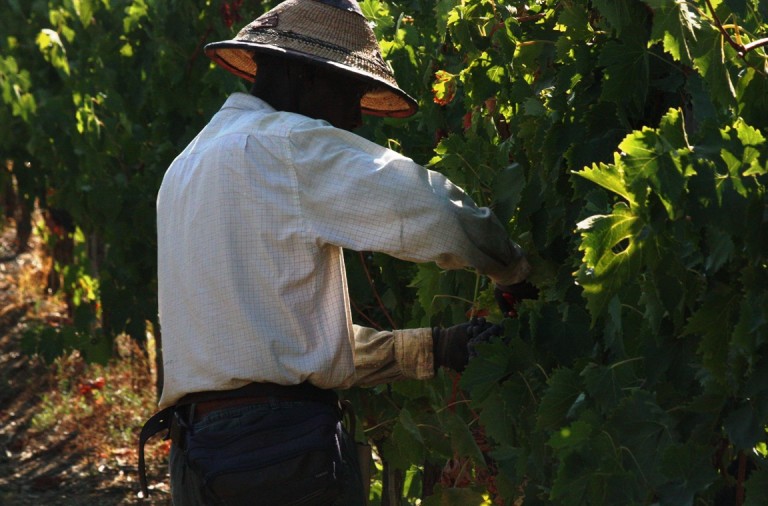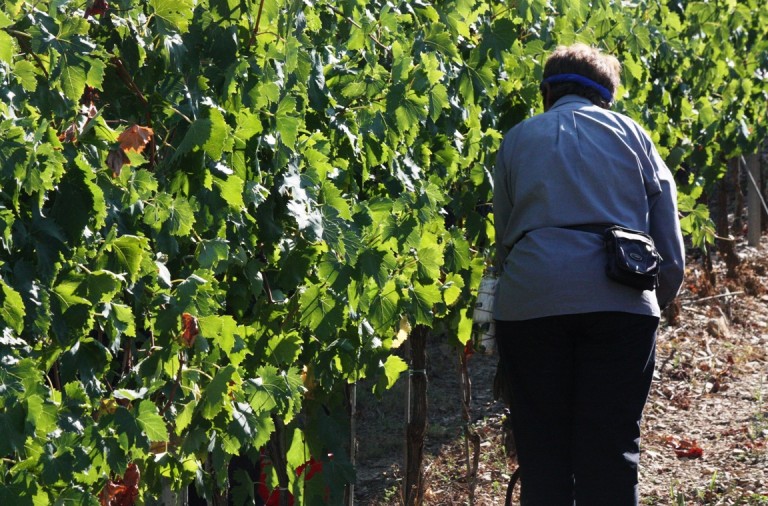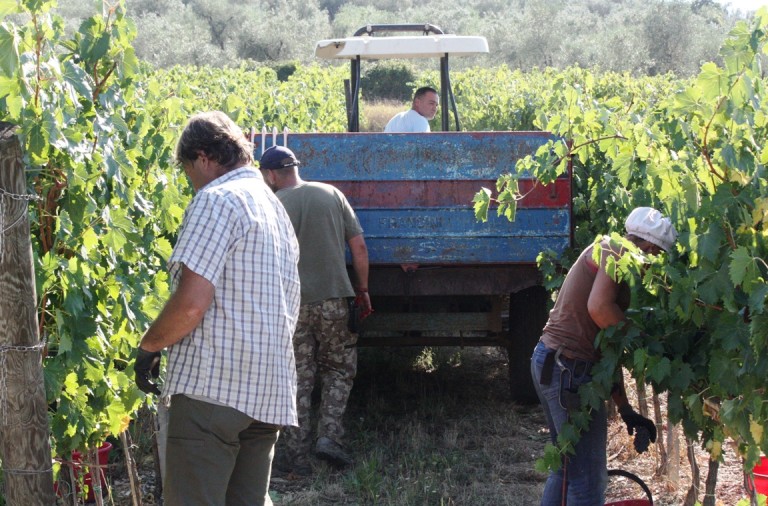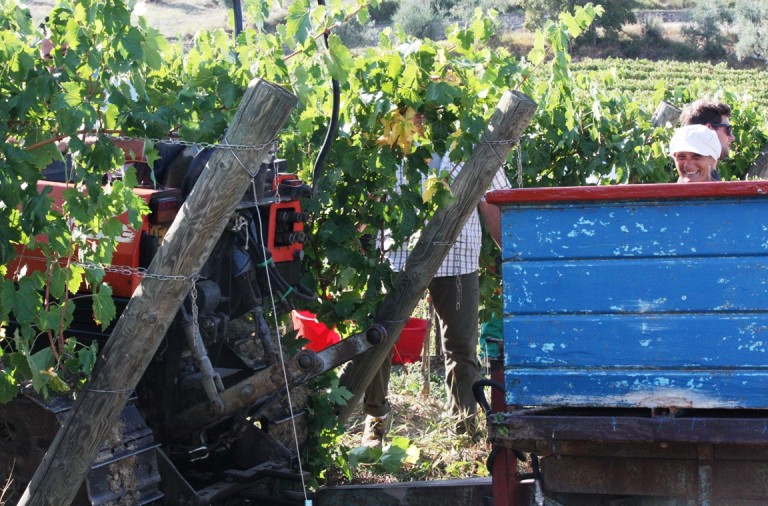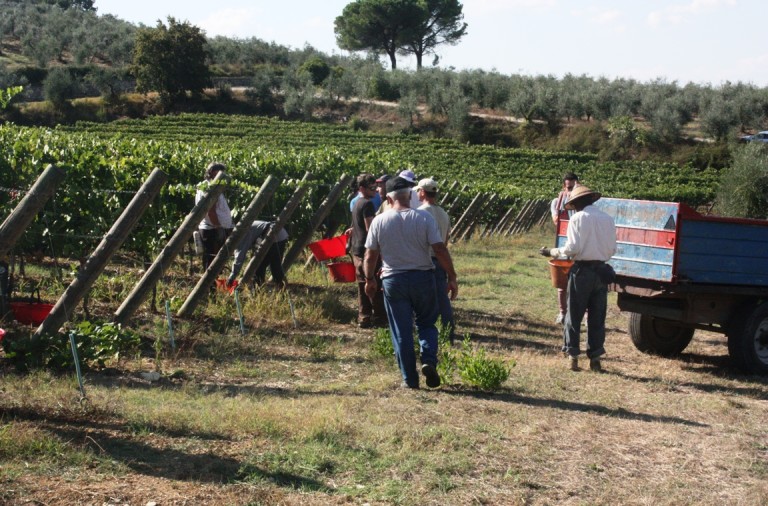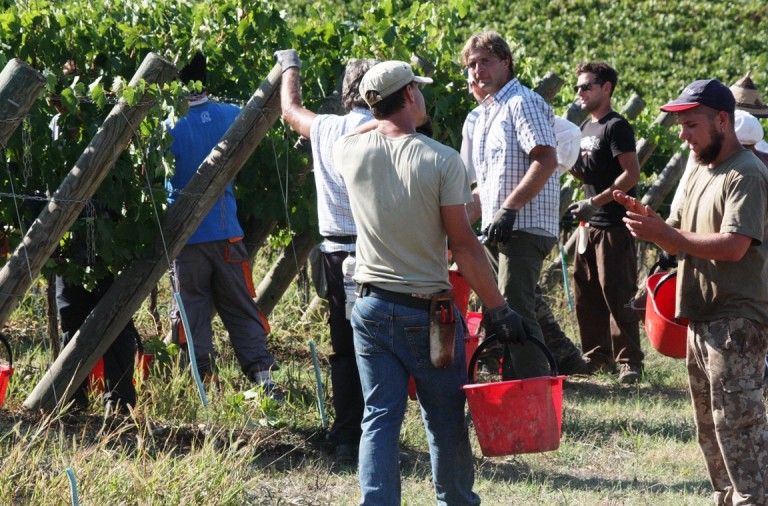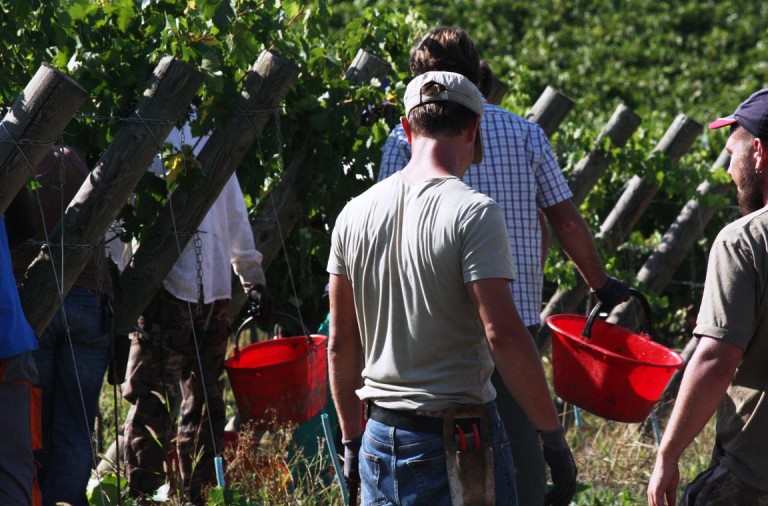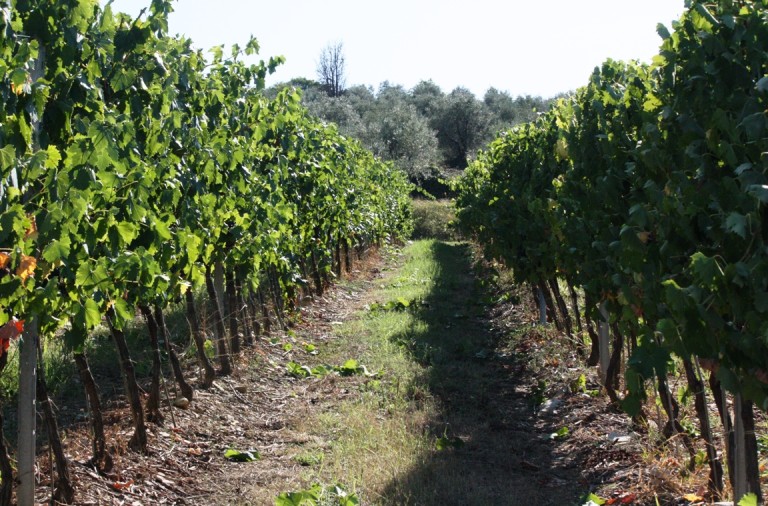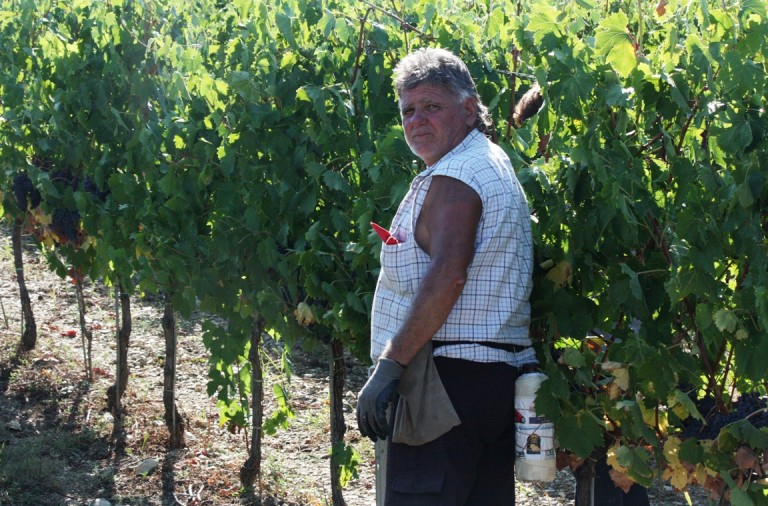Articolo disponibile anche in: Italian
The Peppoli vineyard, set along one of the most beautiful ridges of the Chianti Classico territory, is located in Mercatale, along the old road that leads to the Gabbiano Castle and, further along, to Greve in Chianti.
On a sunny day in the beginning of September, the sun beats strongly down and almost all of the harvesters are wearing sun hats. The bunches of Sangiovese grapes (those which are necessary to create Chianti Classico), aren’t quite mature enough.
This is a job of preselection: some are removed to strengthen the others. But these are not thrown away. They will be used to make rosè wine. The same procedure was followed a few days before in the glorious vineyards of Tignanello.
These are also Sangiovese grapes. Here the vineyards are separated into small sections which include two jewels: the 57 hectares of the Tignanello vineyard and the adjoining 20 hectares of the Solaia vineyard.
These are Sangiovese and Cabernet (Sauvignon and Franc). “This preparatory job is fundamental”, explains Stefano Carpaneto, who follows each step carefully.
2015 was a grand vintage for Tignanello (the bottles will leave the wine cellar, ready for sale come the spring of 2017). This year’s vintage, 2016? “For now we can say it is going well”, says Carpaneto, crossing his fingers. “But the months of September will be decisive. We can only pass judgment when all the grapes are in the cellar”.
The sun slowly fades behind the hills. Today’s work is done. Everyone knows that Sangiovese is an extraordinary but difficult vine. At Antinori, it is cared for like a father for his son.
At the end of September there will be the harvest. Afterwords, it is Cabernet’s turn. The Marquis Piero Antinori will go into the vineyard to taste the grapes. He will then go into the wine cellar to follow the first “must” closely.
And the grand voyage of the 2016 Tignanello will begin.
Matteo Pucci
